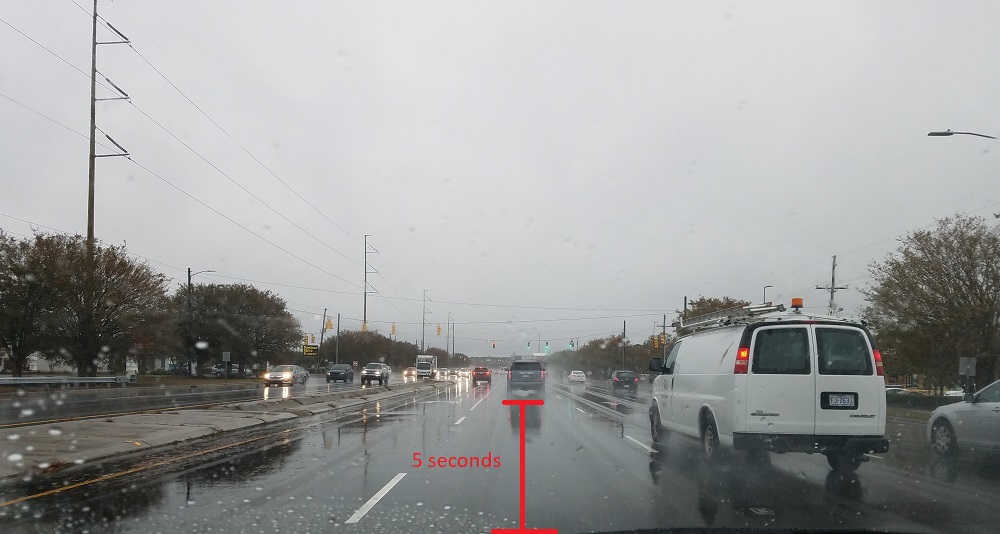If you were to ask an experienced driver what an ideal following distance is they would probably say something like “One car length per 10 miles per hour”. However, since those times things have changed a bit. Mainly because many individuals have a hard time determining what a car length is when they’re stationary and find it nearly impossible going 70 mph down the highway.
Now we use a much easier and effective method based upon seconds. Here’s how it works, when the vehicle ahead of you passes a stationary landmark (sign, shadow, road marking) you begin counting “one thousand one, one thousand two, one thousand three,…..” until you reach that same landmark. Whatever number you reach is your following distance based upon seconds. So, if you count to “one thousand three” your following distance is three seconds.
The NC DMV only requires a two seconds following distance under normal conditions but frankly two seconds isn’t enough. At SDTC and in many other states they recommend a three second following distance under ideal circumstances. If it’s raining, foggy or night time you would add a second of following distance for each hazardous condition. If you’re following a large truck or motorcycle you would add a second of following distance. So, if it’s raining and you’re following a semi truck down the highway you would want at least a following distance of five seconds or more.
Your following distance along with your attention are your number one defense against car crashes!
Joe Fitzgerald

